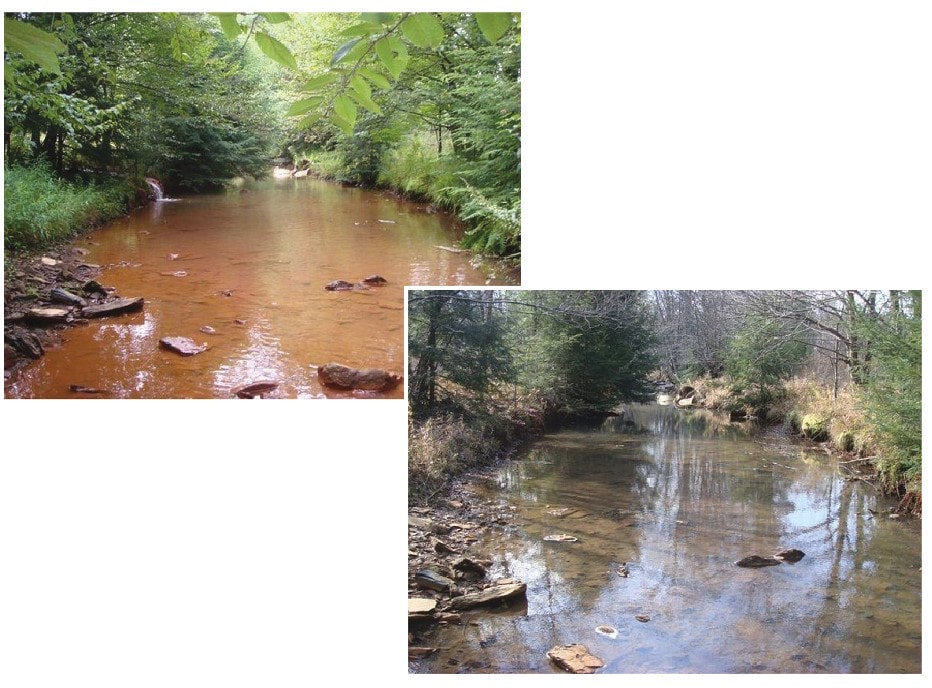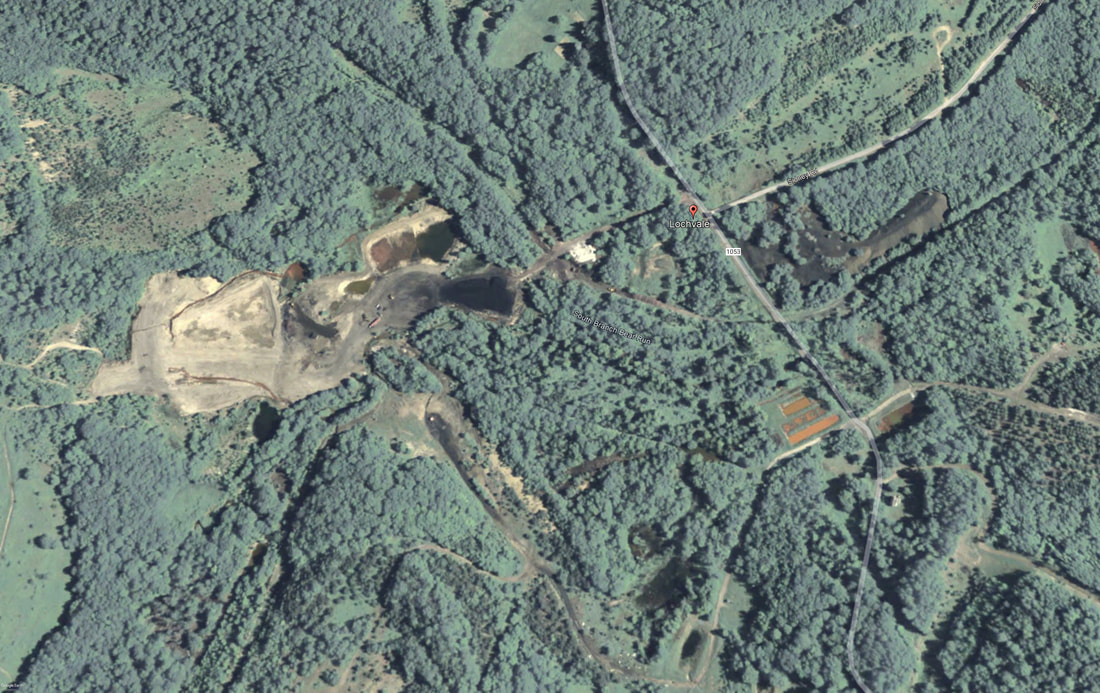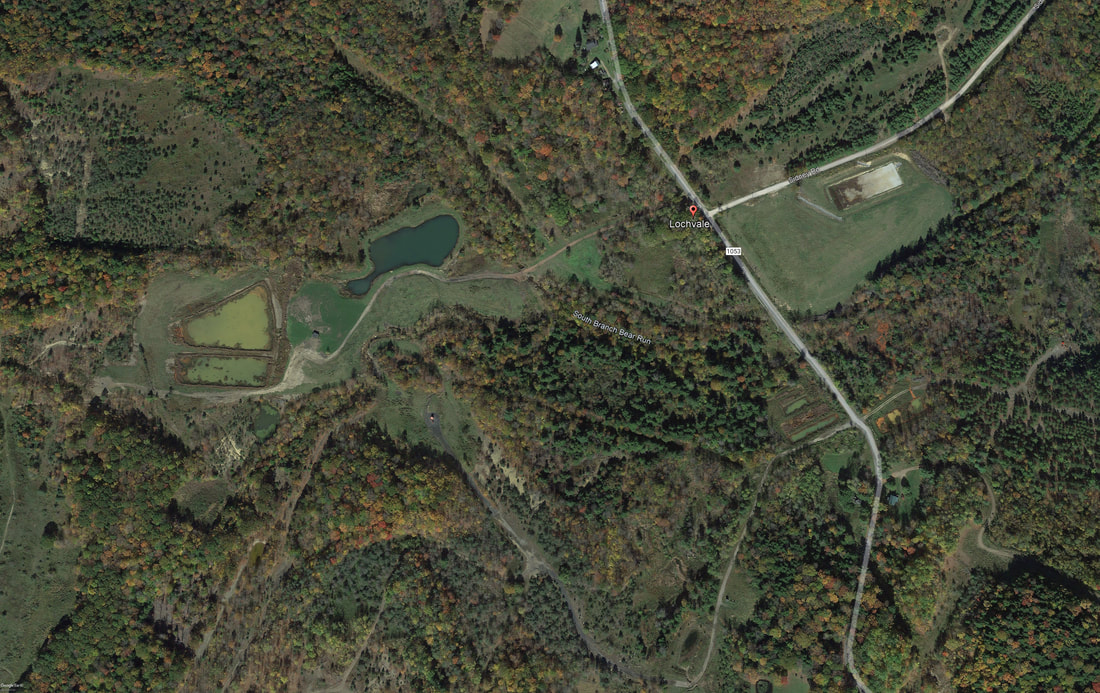|
Riverkeeper's note: The following post was written, and attached podcast recorded by Northern Tier Regional Director Emily Shosh. She can be contacted at [email protected]. Abandoned mine drainage (AMD) currently causes water pollution in 5,500 miles of Pennsylvania streams, according to the state's Department of Environmental Protection, and is the second highest cause of stream degradation in the state according to numerous reports, including this fact sheet from the Chesapeake Bay Foundation. The phenomenon occurs when old coal seams fill with water, washing over minerals and creating a chemical reaction that leads to various minerals and acids to wash into streams. The general outcome is an unlivable and acidic pH and a high level of dissolved and/or precipitated metals (mostly iron, aluminum and manganese) in the substrate and water. However, restoration efforts by professionals such as Tom Clark, Abandoned Mine Program Project Development Manager for Kleinfelder Engineering, have helped to return streams back into livable waterways for trout, macroinvertebrates and other aquatic life.
Big opportunity The first large funding award to be put on the ground in the Tioga area came recently with the Abandoned Mine Land Economic Revitalization Program (AMLER). Through this program, the SRBC was awarded $68 million. “When infrastructure money came, the wheels were on," Clark said. "We were looking at an eight-figure project to restore 20 miles of waterway.” SRBC’s current Mine Drainage Coordinator, Andrew King, is an avid fly fisherman and excited to see where the work may take the Tioga River. “We are about to wrap up the 90 percent of the design phase for the treatment plant. The project is going to be bid out as two separate projects, the first being construction of the plant and second the conveyance lines. This project has nearly 11 miles of pipe to bury and directionally drill." he said. "Construction for both projects will take place simultaneously and the pipeline project will have two crews working on opposite ends towards the plant to reduce disruptions time around town. "Bidding will likely happen this fall. Depending on how winter is, construction would then likely start in the early spring of ’25. Construction was estimated to take 18 months. The plant should be online before the end of ’26. Water quality will improve as soon as the plant is online.” Abandoned Mine Drainage treatment projects are considered “active” or “passive” in design. Active treatment design generally entails the addition of pH buffers to a mixing tank along with polymers, which raise pH and make suspended solids and metals clump together (flocculate). This step in the design requires ongoing maintenance, as the additions (pH buffers and polymers) are added often. The water then enters a settling basin called the clarifier to precipitate out metals before entering the waterbody. This is similar to the treatment of drinking water or waste water. A smaller area of land is typically utilized, and the treated water has a low retention time in the constructed basins. This means less potential for thermal pollution. Conversely, passive treatment relies on a large area and little to no maintenance, where the AMD discharges undergo a limestone dissolution and pass through large settling and polishing ponds before entering the waterbody. The amount of water treated per area of land is lower, and the water undergoes a long retention time within basins. This may accrue thermal pollution. Each design has its pros and cons, but both are very effective, according to King. "Because the current Tioga restoration project is an active treatment plant, it does not require settling or polishing ponds that a passive treatment system does. These ponds allow the precipitated metals to fall out and settle, but the water is warmed by the sun," he said. "We are looking forward to making much of the upper Tioga a coldwater trout fishery. In our design, precipitated metals at the treatment plant will be removed by the clarifiers.” The SRBC will continue to release updates on the work as it arises. For a complete, interactive look into the work, check out their story map here. Also consider checking out their announcement of grant funding. "Although we have had an increase in available funding, we still can’t do all the work that needs to be done." said Clark. "The Bureau of Abandoned Mine Reclamation has explained current funding is meant to be focused on the ‘biggest bang for the buck’ projects, to fulfill the vision that all major AMD-impacted rivers and streams will be restored.” Clark mentioned that watershed associations and other organizations are key to “tell the story of what these projects do.” This may involve macroinvertebrate sampling and other monitoring to offer a clear before and after. Clark advocates for those interested in getting involved to act now while funding is flowing, and to also pay attention to where projects are happening. “We are at an exciting precipice of really significant, positive change when it comes to mine reclamation and AMD treatment," he said. "In a few years there will be so much work happening that we will see watersheds ‘flip’ from being impaired and dead to thriving.”
0 Comments
Leave a Reply. |
AuthorsRiverkeeper John Zaktansky is an award-winning journalist and avid promoter of the outdoors who loves camping, kayaking, fishing and hunting with the family. Archives
July 2024
Topics |




 RSS Feed
RSS Feed